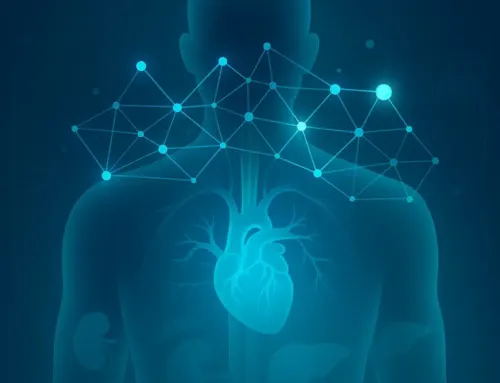
Approx. read time: 9.4 min.
Post: Replacing Ozempic Injections with Healthy Eating Habits for Weight Loss
Weight loss is a common goal for many people, and there are various methods available to achieve it. Ozempic injections have gained popularity as an effective treatment for weight loss. However, adopting healthy eating habits and a structured meal plan can be a sustainable and natural alternative. This article explores how replacing Ozempic injections with mindful eating and a healthy diet can promote weight loss. Additionally, a sample meal plan is provided to help you get started on your journey.
Understanding Ozempic Injections
Ozempic is a brand name for semaglutide, a medication initially designed to treat type 2 diabetes. It belongs to a class of drugs called GLP-1 receptor agonists, which work by increasing insulin secretion, decreasing glucagon levels, and slowing gastric emptying. These actions help regulate blood sugar levels and promote weight loss.
Benefits of Ozempic for Weight Loss
- Appetite Suppression: Ozempic helps reduce hunger by affecting appetite-regulating hormones.
- Improved Blood Sugar Control: It aids in maintaining stable blood glucose levels, reducing cravings for sugary foods.
- Enhanced Satiety: The medication increases the feeling of fullness after meals, leading to reduced calorie intake.
While Ozempic is effective for weight loss, it comes with potential side effects, including nausea, vomiting, diarrhea, and possible long-term health risks. This has led many to seek natural alternatives for weight management.
The Power of Healthy Eating Habits
Healthy eating habits can offer a sustainable and holistic approach to weight loss. By making mindful choices about what, when, and how you eat, you can achieve your weight loss goals without relying on medication.
Key Principles of Healthy Eating
- Balanced Diet: Ensure that your meals include a variety of nutrients, including proteins, healthy fats, carbohydrates, vitamins, and minerals.
- Portion Control: Eating appropriate portion sizes helps manage calorie intake without feeling deprived.
- Regular Meals: Consistency in meal times prevents overeating and maintains metabolic stability.
- Hydration: Drinking adequate water supports digestion and reduces false hunger cues.
- Mindful Eating: Paying attention to hunger and fullness signals helps prevent overeating.
Benefits of Healthy Eating for Weight Loss
- Natural Appetite Regulation: Eating nutrient-dense foods helps naturally regulate appetite.
- Improved Digestion: A balanced diet promotes digestive health, aiding in nutrient absorption and weight management.
- Sustainable Energy Levels: Proper nutrition ensures steady energy levels, reducing the temptation to snack on unhealthy foods.
Order of Eating and Its Impact
The order in which you eat your food can significantly impact your weight loss efforts. Recent studies suggest that eating vegetables and proteins before carbohydrates can help control blood sugar levels and reduce overall calorie intake.
Benefits of Eating in a Specific Order
- Blood Sugar Control: Consuming fiber-rich vegetables and protein before carbs slows down the absorption of sugar, preventing spikes in blood glucose levels.
- Enhanced Satiety: Eating vegetables and proteins first can increase feelings of fullness, leading to reduced calorie consumption during the meal.
- Improved Digestion: Starting with fiber-rich foods aids in digestion and promotes a healthy gut microbiome.
Practical Tips for Eating in Order
- Start with a Salad: Begin your meal with a vegetable-based salad to take advantage of the fiber content.
- Prioritize Proteins: Follow the salad with a portion of lean protein such as chicken, fish, tofu, or legumes.
- Finish with Carbs: End your meal with whole grains or starchy vegetables to maintain balanced blood sugar levels.
Challenges and Solutions: Switching from Medication to Healthy Eating
Transitioning from relying on medication for weight loss to adopting healthy eating habits can present several challenges. However, with the right strategies and mindset, these obstacles can be overcome, leading to sustainable and long-term success. Below are some common challenges people face and practical solutions and tips to address them.
Challenge 1: Managing Cravings
Solution: Cravings, especially for sugary and high-fat foods, can be intense when transitioning away from medication that helps control appetite.
- Eat Regularly: Consuming meals and snacks at regular intervals helps maintain stable blood sugar levels and reduces the likelihood of intense cravings.
- Healthy Alternatives: Satisfy sweet cravings with naturally sweet foods like fruits, and opt for healthy fats like nuts and avocados to curb cravings for high-fat foods.
- Hydration: Sometimes, thirst is mistaken for hunger. Drink plenty of water throughout the day to stay hydrated and reduce false hunger signals.
- Mindful Eating: Practice mindful eating by savoring each bite and paying attention to the flavors and textures of food. This can enhance satisfaction and reduce the desire to overeat.
Challenge 2: Time Management
Solution: Preparing healthy meals can be time-consuming, especially for those with busy schedules.
- Meal Prepping: Dedicate a few hours each week to prepare and portion meals in advance. This saves time on busy days and ensures you have healthy options readily available.
- Simple Recipes: Choose recipes that are quick and easy to prepare. Focus on meals that require minimal ingredients and cooking time.
- Batch Cooking: Cook large batches of food and freeze portions for future meals. This is particularly useful for staples like soups, stews, and grains.
- Healthy Convenience Foods: Keep healthy convenience foods like pre-washed salad greens, canned beans, and frozen vegetables on hand for quick meal assembly.
Challenge 3: Knowledge Gap
Solution: Understanding what constitutes a balanced diet and how to implement it can be daunting.
- Education: Invest time in learning about nutrition from credible sources such as registered dietitians, nutritionists, and reputable health websites. Books and online courses can also be valuable resources.
- Professional Guidance: Consult a dietitian or nutritionist to create a personalized meal plan tailored to your needs and preferences.
- Start Small: Begin by making small, manageable changes to your diet. Gradually incorporate more healthy foods and adjust your eating habits over time.
- Keep a Food Diary: Track what you eat and how it makes you feel. This can help identify patterns and areas for improvement.
Challenge 4: Social and Environmental Influences
Solution: Social gatherings, family habits, and work environments can influence eating behaviors.
- Plan Ahead: If you’re attending social events, plan your meals in advance. Eat a healthy snack before you go to avoid overeating unhealthy options.
- Communicate: Inform friends and family about your goals. Seek their support and encourage them to join you in adopting healthier eating habits.
- Healthy Environment: Create a healthy food environment at home by stocking up on nutritious foods and limiting the availability of junk food.
- Workplace Strategies: Pack healthy lunches and snacks for work. If possible, encourage your workplace to provide healthier food options.
Challenge 5: Emotional Eating
Solution: Emotional eating can be a significant barrier to maintaining a healthy diet.
- Identify Triggers: Recognize what triggers your emotional eating. Common triggers include stress, boredom, and sadness.
- Healthy Coping Mechanisms: Develop alternative coping strategies such as exercise, meditation, journaling, or talking to a friend.
- Mindful Eating Practices: Slow down and pay attention to your eating habits. Ask yourself if you are truly hungry or eating to cope with emotions.
- Seek Support: Consider speaking with a therapist or counselor if emotional eating is a persistent issue.
Challenge 6: Sustainability
Solution: Maintaining a healthy diet over the long term can be challenging without the structure provided by medication.
- Set Realistic Goals: Set achievable and realistic weight loss and health goals. Celebrate small victories to stay motivated.
- Variety and Enjoyment: Ensure your diet includes a variety of foods that you enjoy. Experiment with new recipes and ingredients to keep meals interesting.
- Regular Monitoring: Regularly monitor your progress and adjust your meal plan as needed. Keeping a journal can help track your successes and areas for improvement.
- Support Networks: Join support groups or online communities focused on healthy eating and weight loss. Sharing experiences and tips can provide motivation and accountability.
By addressing these challenges with practical solutions, you can transition from medication to a healthy eating approach for weight loss more smoothly and effectively. Remember that consistency and patience are key, and adopting these habits will lead to sustainable, long-term success.
Replacing Ozempic injections with healthy eating habits and mindful meal planning can be a sustainable and effective approach to weight loss. By focusing on balanced nutrition, portion control, and the order of eating, you can achieve your weight loss goals naturally and maintain them long-term. The sample meal plan provided offers a practical starting point for incorporating these principles into your daily routine. Embrace the power of healthy eating, and take control of your weight loss journey today.
Below is a toggled sample diet plan. Try out our new specialized meal prep for generating unique monthly meal plans. Enjoy.









